- Mix the levain by dissolving the liquid starter in the water, then add the flours and mix well. Ferment at room temperature, covered tightly, until the surface is bubbly and wrinkled. (8-12 hours)
- Dissolve the levain in the water (I use a whisk), add the flours and mix to a shaggy mass. Cover and autolyse for 30 minutes.
- Add the salt and mix to incorporate.
- Transfer to a clean, lightly oiled bowl and cover well.
This recipe/method is inspired by Bread Magazine
Steps involved
This is the levain. After adding your starter and then water, stir, then add flour(s).
Flour added to water and levain, a whole wheat and rye mix.
Bread flour (normally) now added to mix. Flexible spatula and bakers plastic scraper are good tools for this step.
Mix thoroughly, no lumps. We let this sit for 30 minutes covered. Bakers use the term “autolyse” for this sitting process.
Salt to be added to that dough that rested. My new scales are pretty accurate but 9 grams is not much. This is a half recipe, normally 19 grams, half is 9 for me, rather error on under.
Use the spatula and scrapper to mix here, incorporating the salt. I actually like to have a small bowl of water, dip my fingers in, rub my hands to dampen and take the dough and move it with my fingers and palms, working the salt in and folding the dough and pushing it out (widening it).
This process takes 3 to 4 hours. Same technique in the bowl (stretch and fold). First 2 hours in the bowl, then lay out on the table, lightly oiled surface. Use a little water or oil on your hands to do this. Cover with bowl in between stretches.
The video of stretching and folding, the dough was put in the fridge afterwards. Now, after about 16 hours. I pulled it from the fridge and let it sit out for about 2.5 hours. You just need to keep an eye on it and decide it’s ready (when it’s ready).
This is a flexible mat I use. It’s designed like a cutting board, plastic and very flexible. I use this to support my parchment paper and then move the dough to the oven.
Parchment paper on top of my mat.
Dust the paper before sitting the dough on top of it.
I should have shaped this dough better before putting in the fridge overnight, but it’s ok. Just gently roll the dough out of it’s container, then dust the top with flour. You can also gently shape the dough if it is not to close to “over proffing”.
Next time I’ll just do one slash with the blade. This allows some release of the steam in the bread, allows to rise more and looks good in my opinion (after baking).
Took the mat over to the oven, opened the oven, slid out the dutch oven, removed the lid and lifted the parchment into to dutch oven. Threw a cube of ice underneath the parchment. Started steaming right away! Put the lid back on for 20 minutes.
After 20 minutes remove the lid. Will still be light in color but you will see a nice lift from the dough and your score marks on the bread will be pretty distinctive.

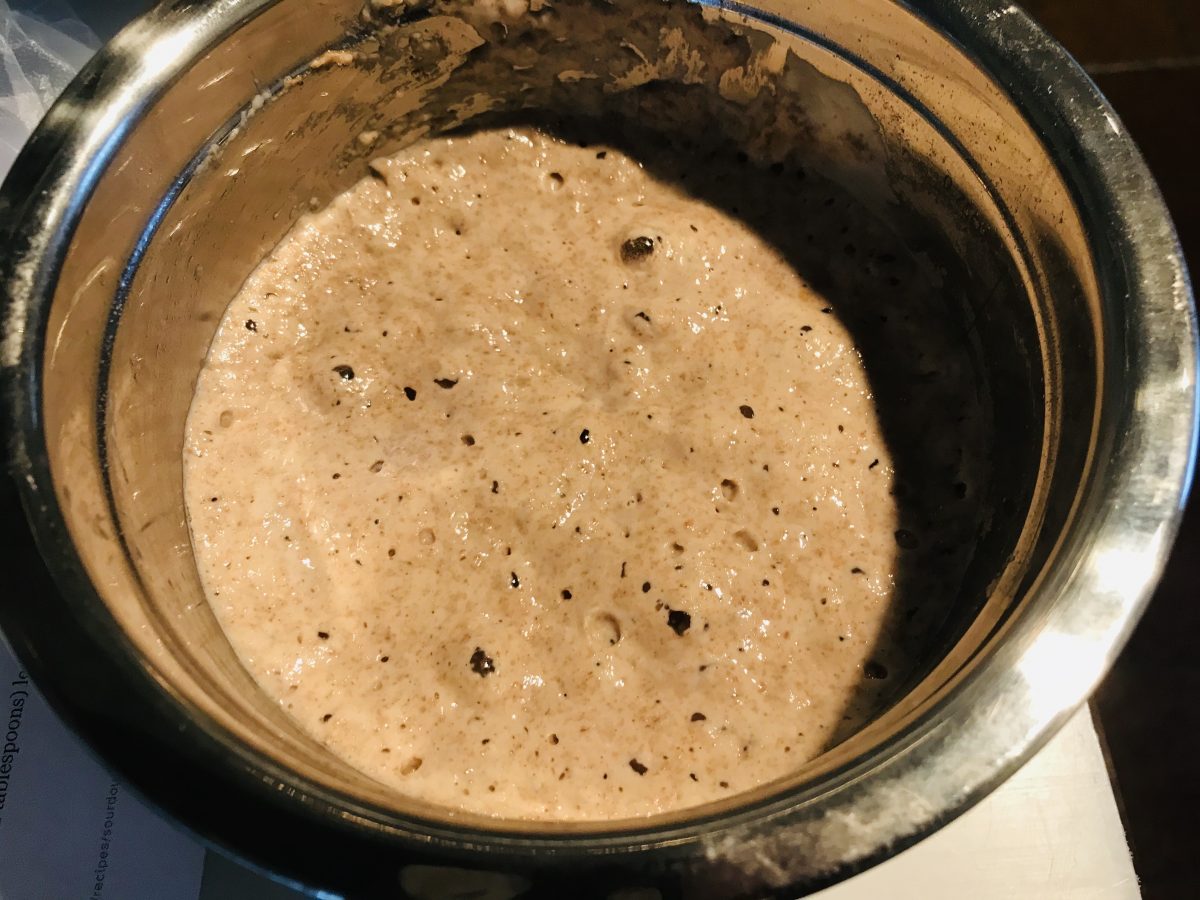
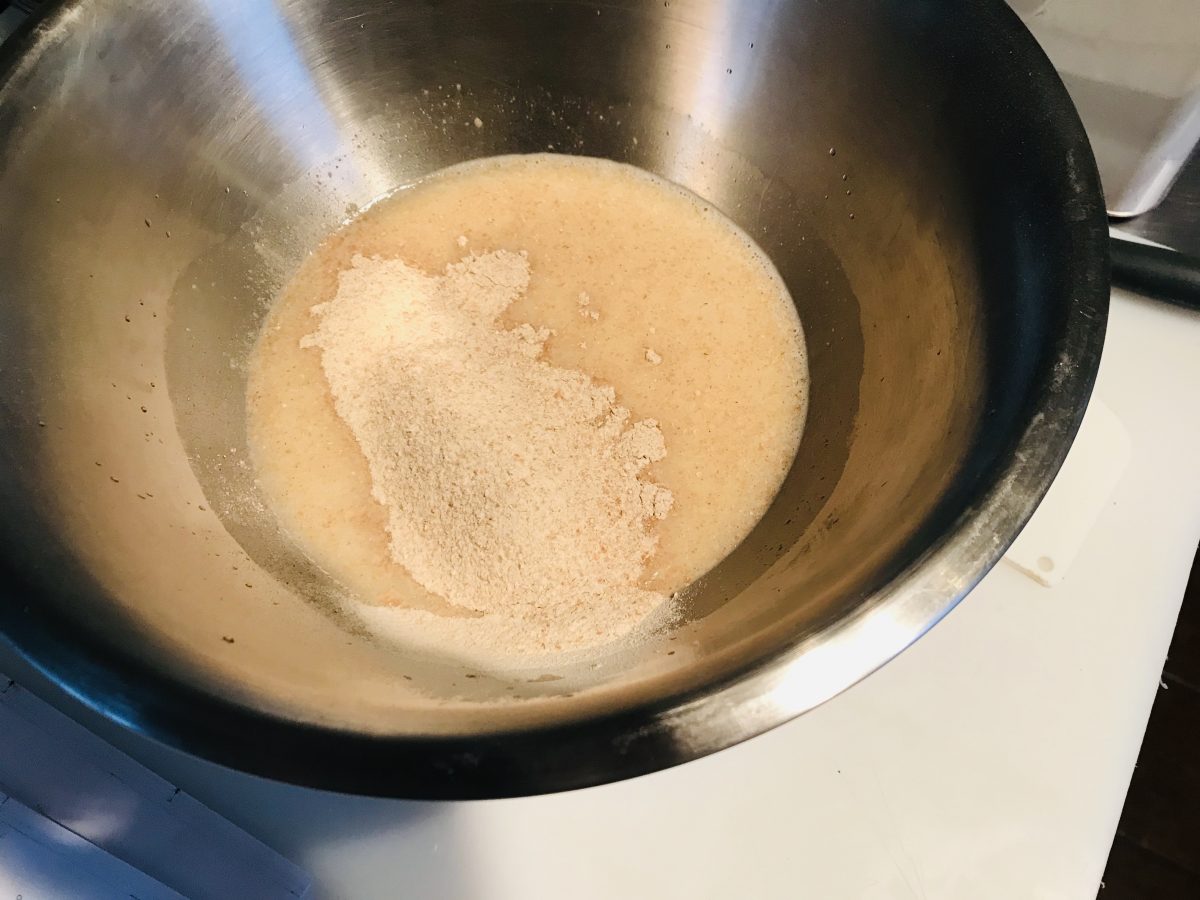
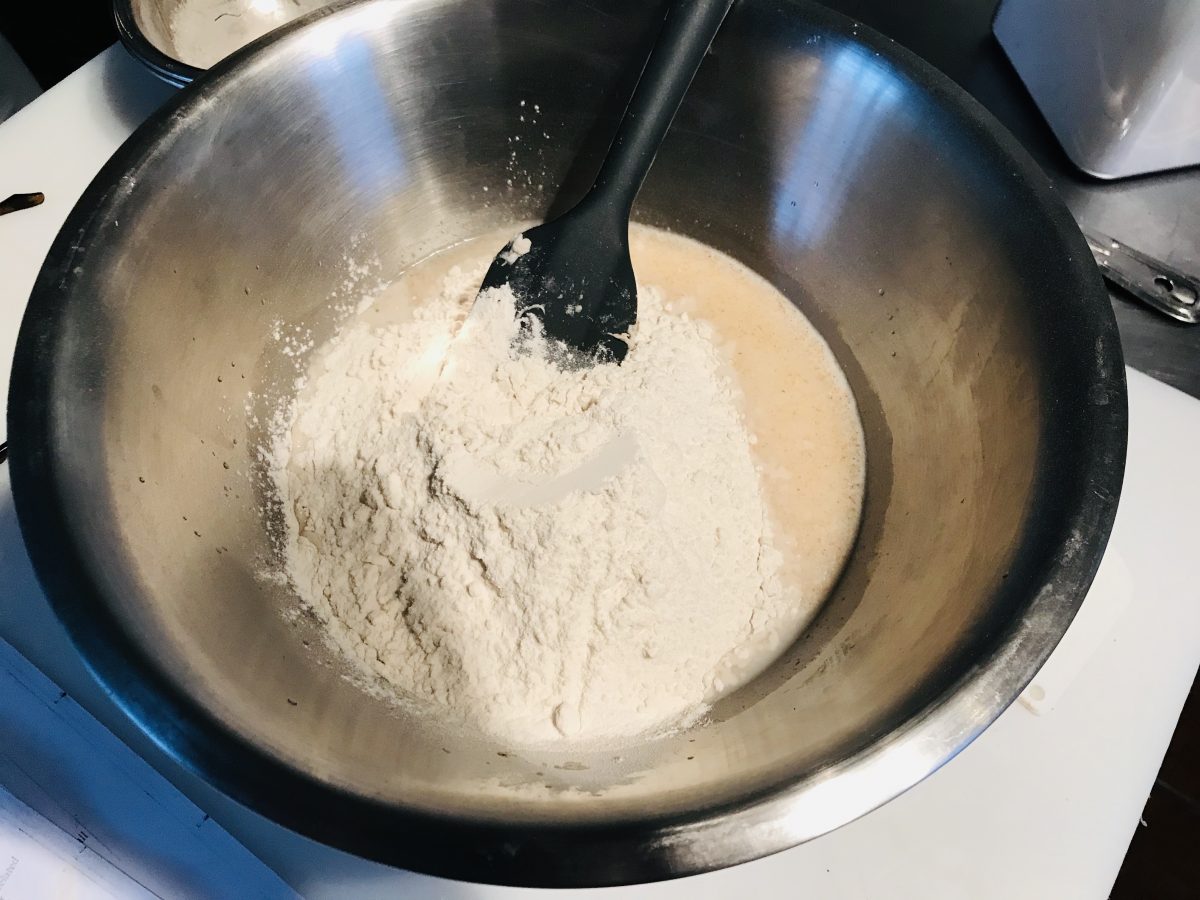
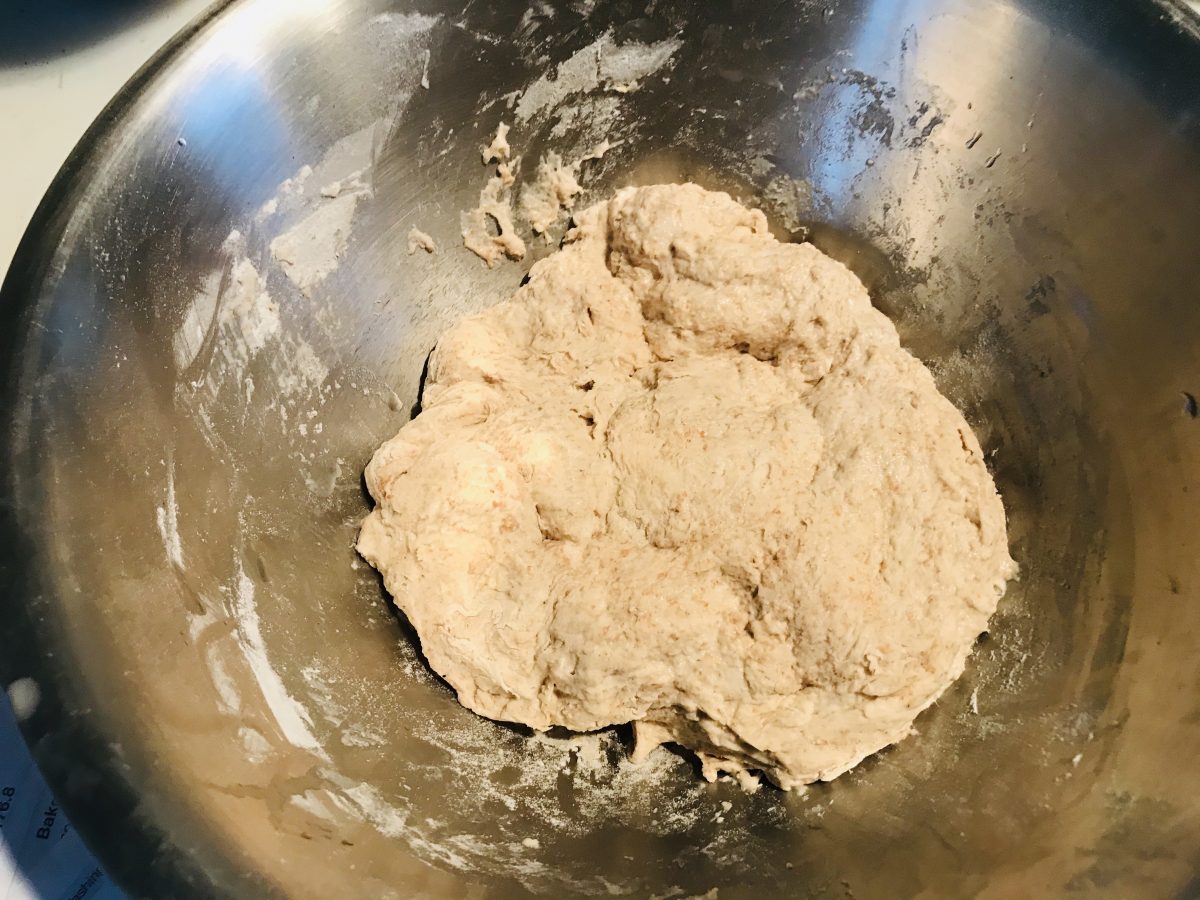
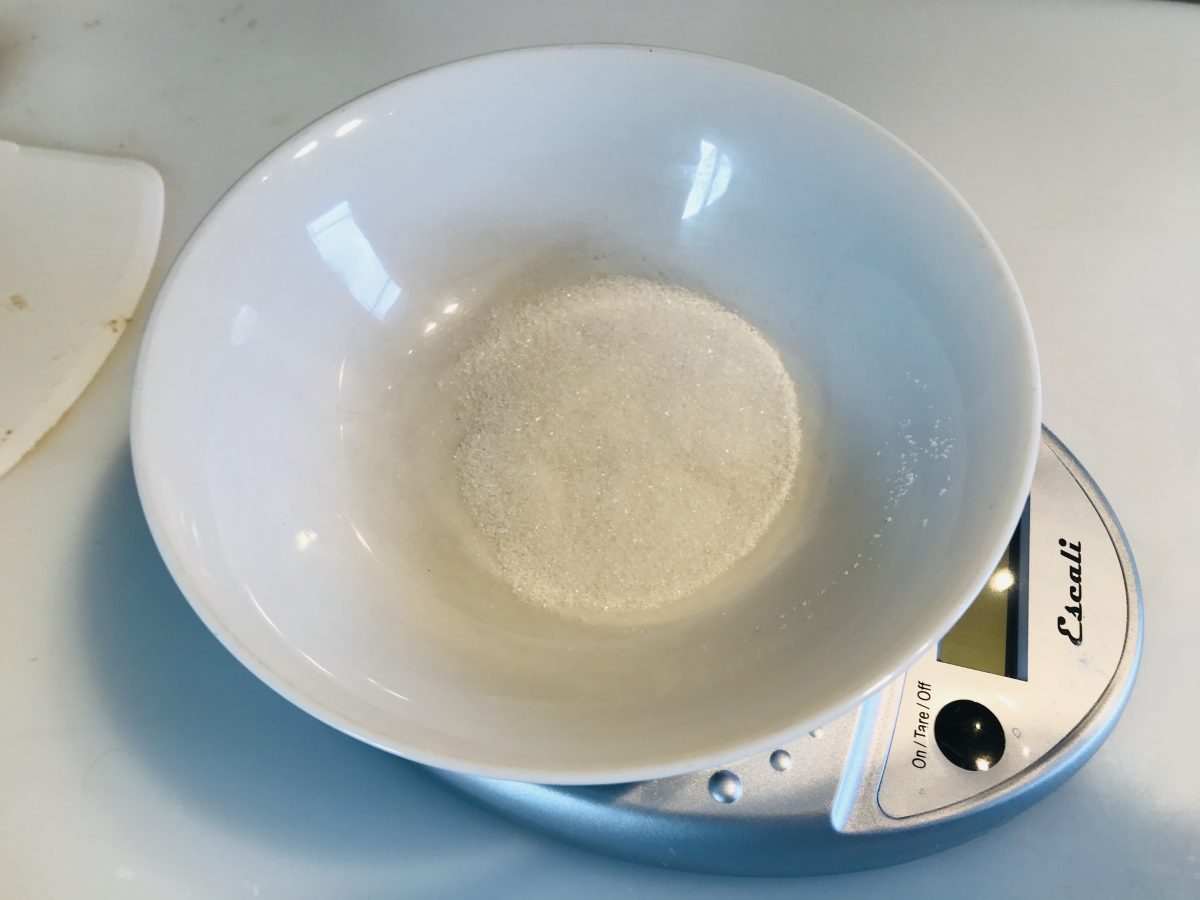
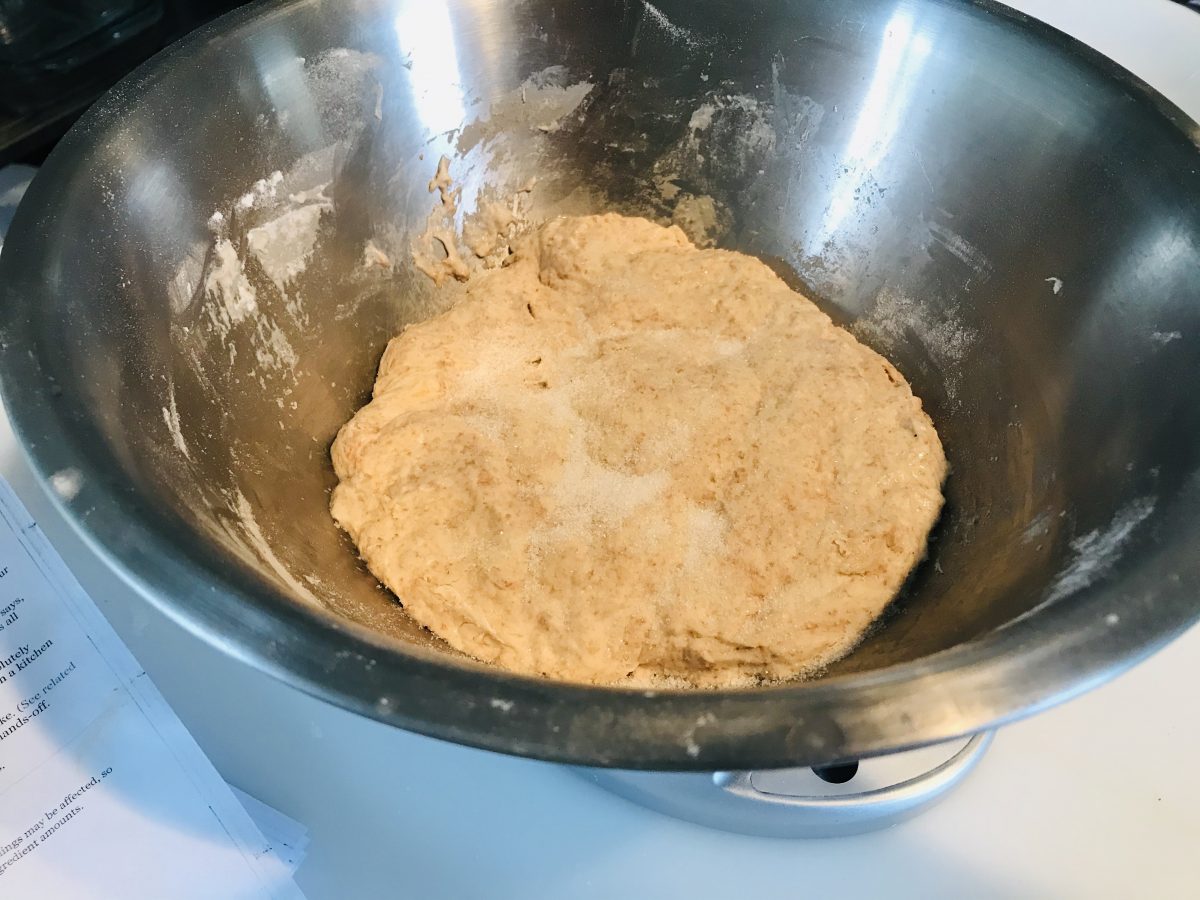
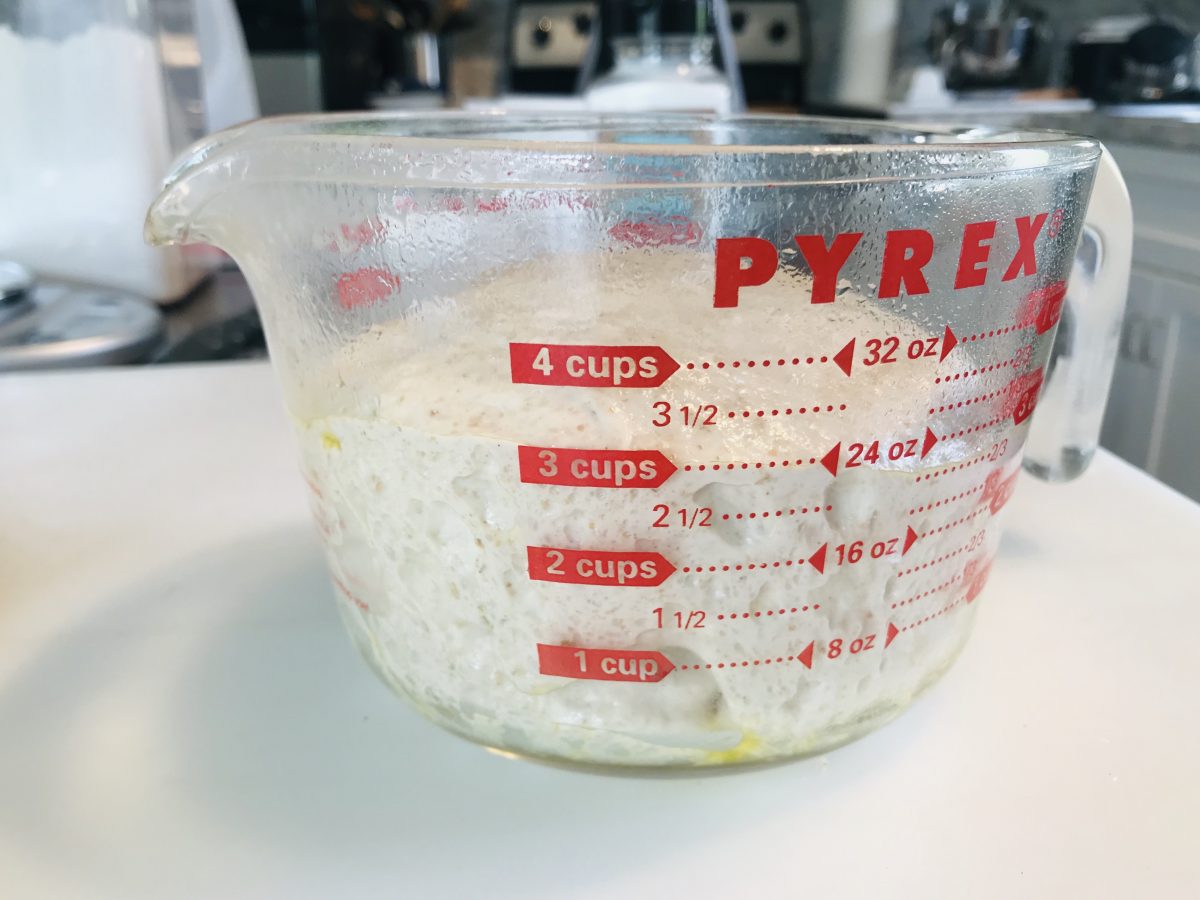
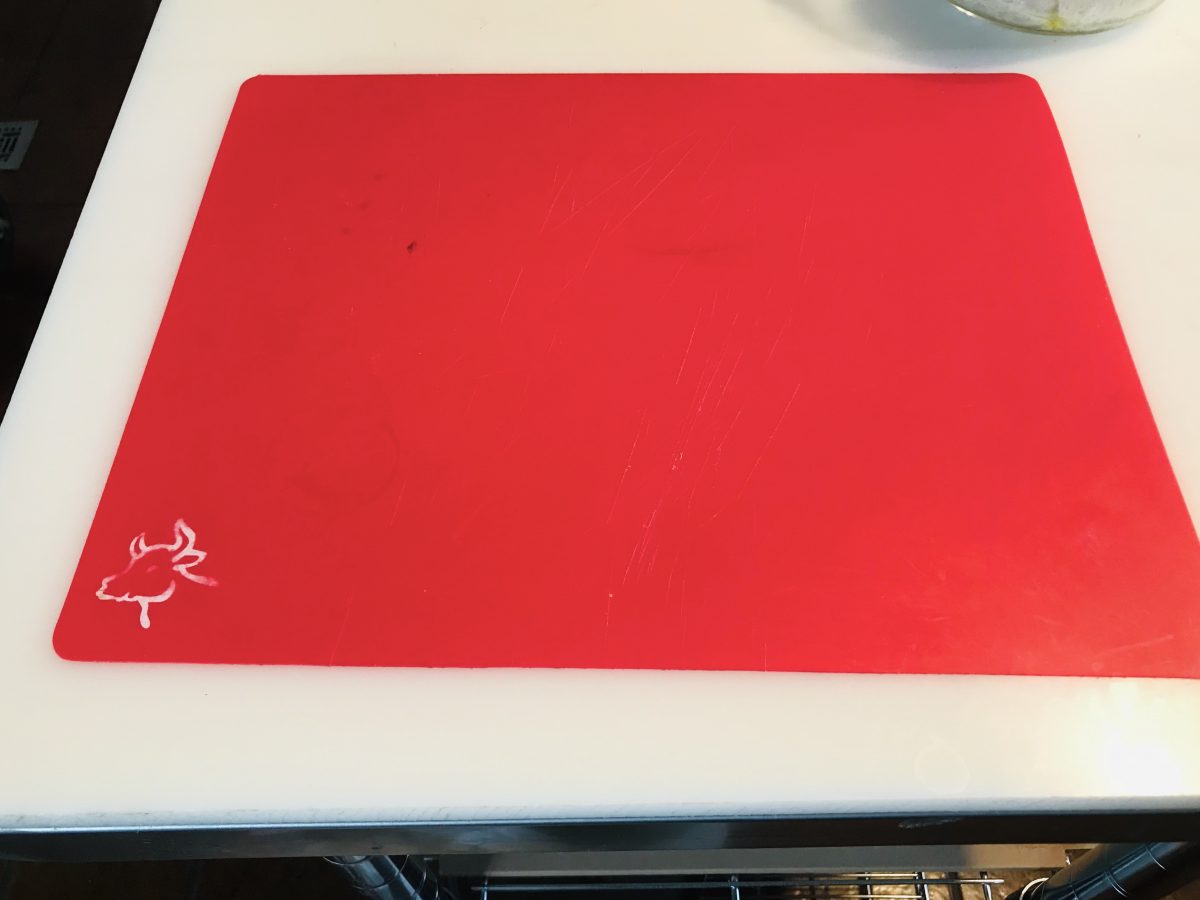
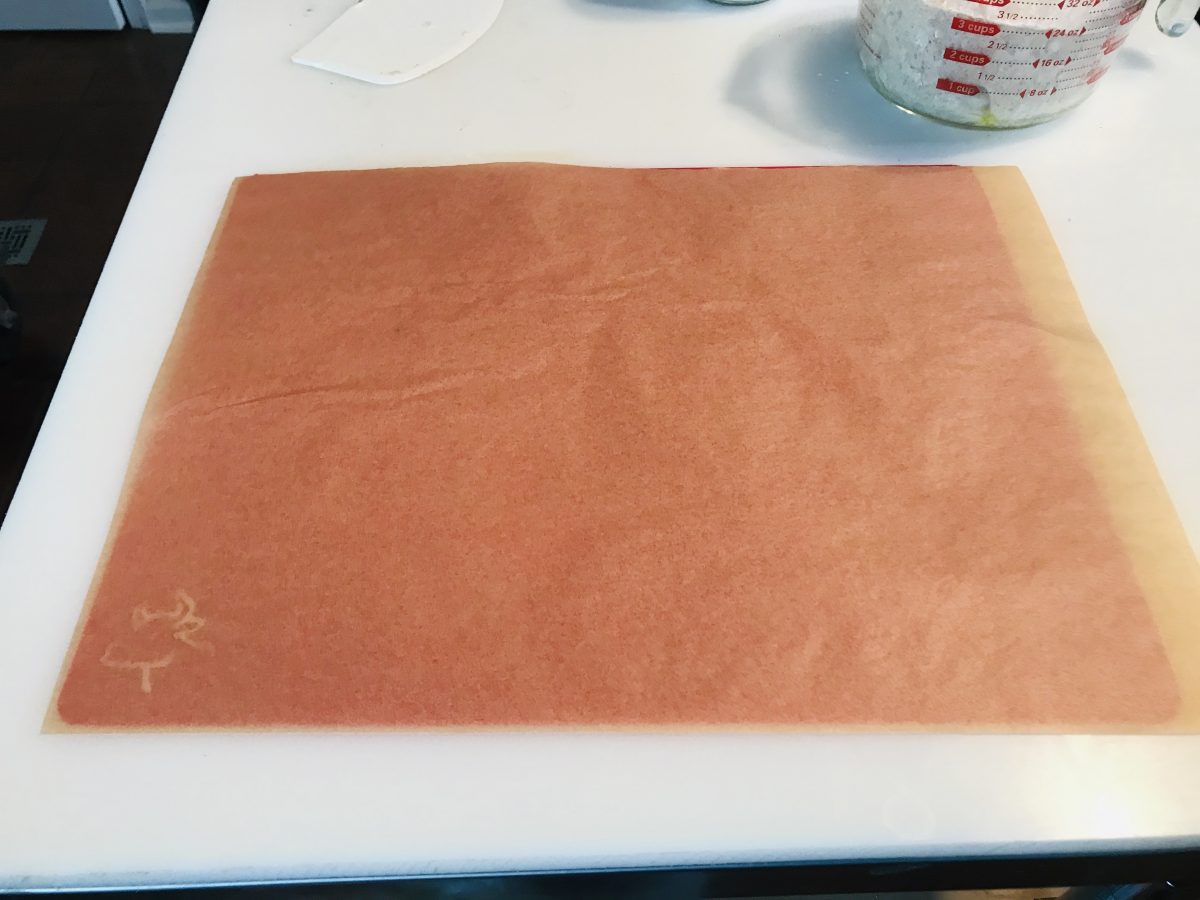
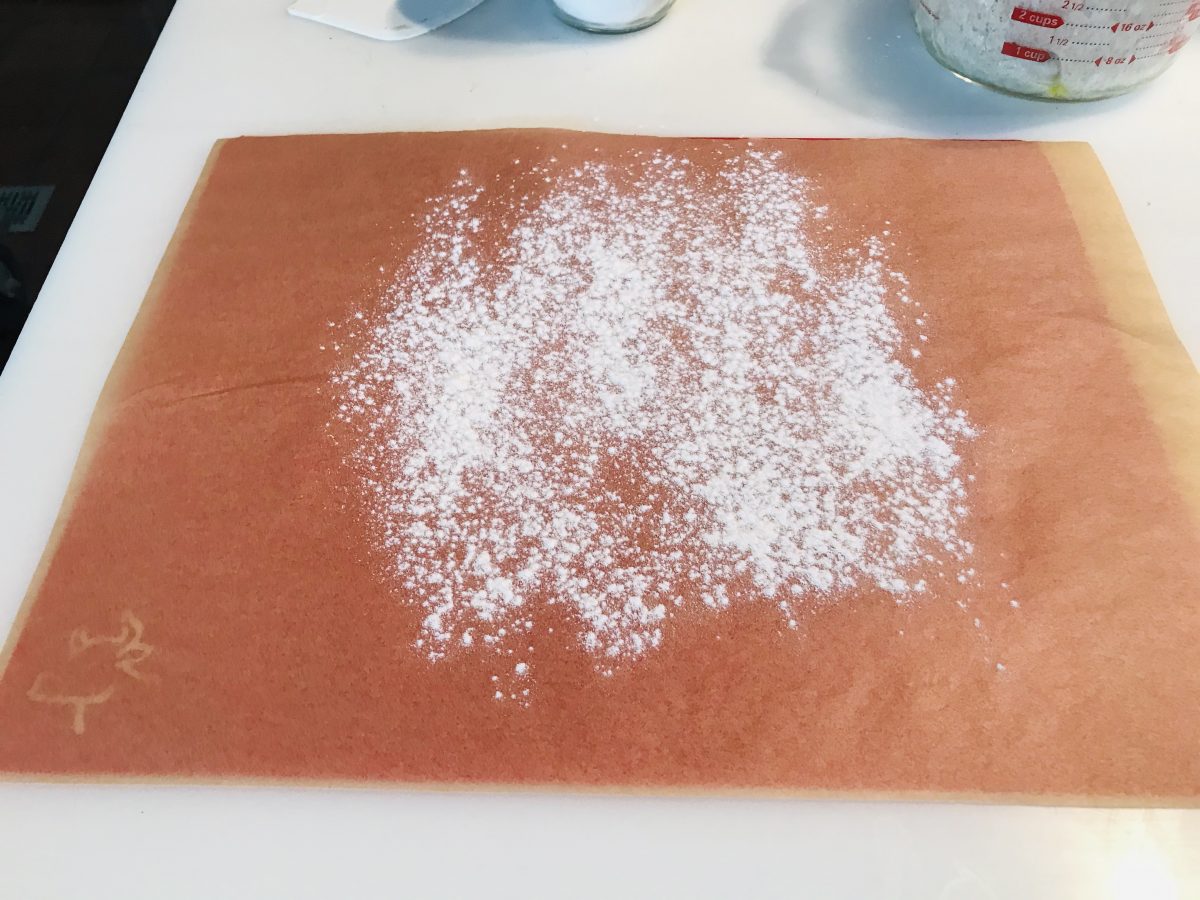
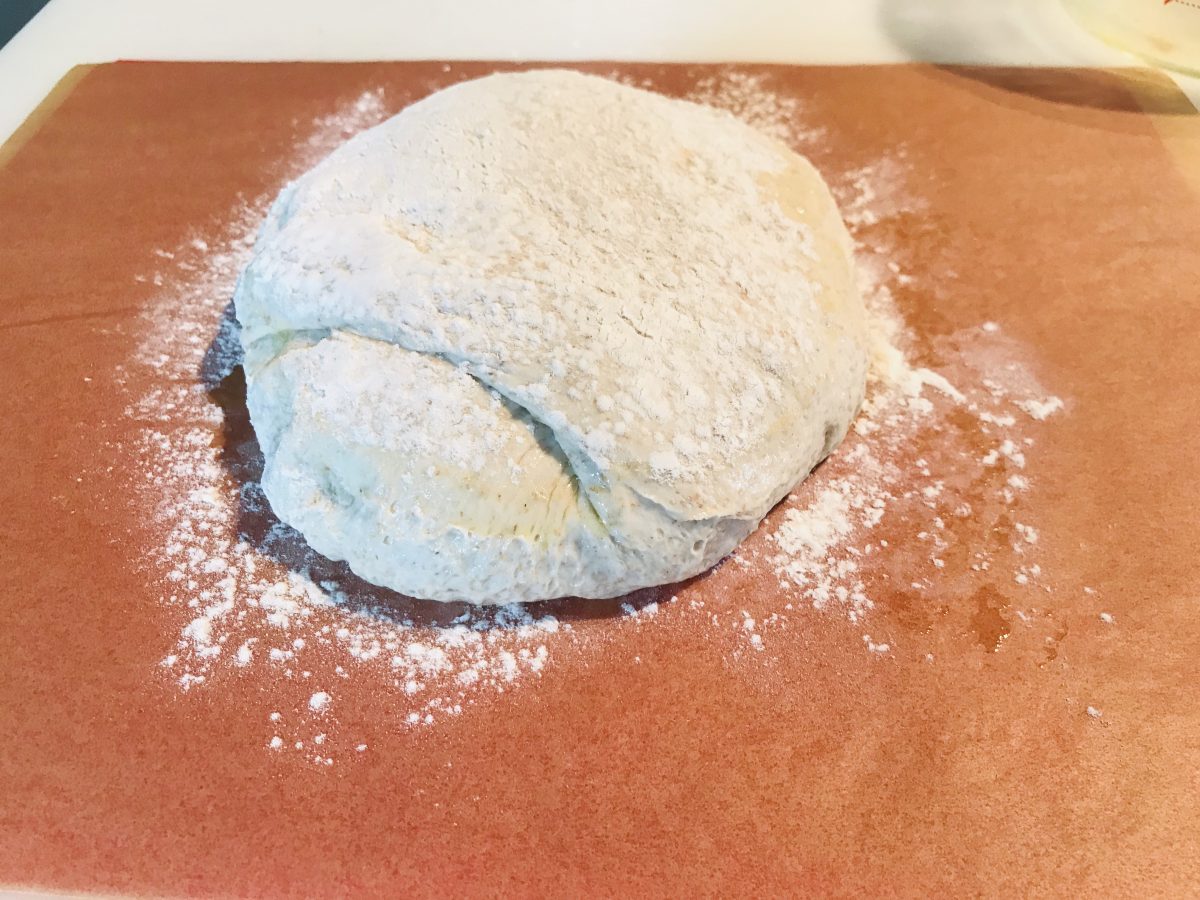
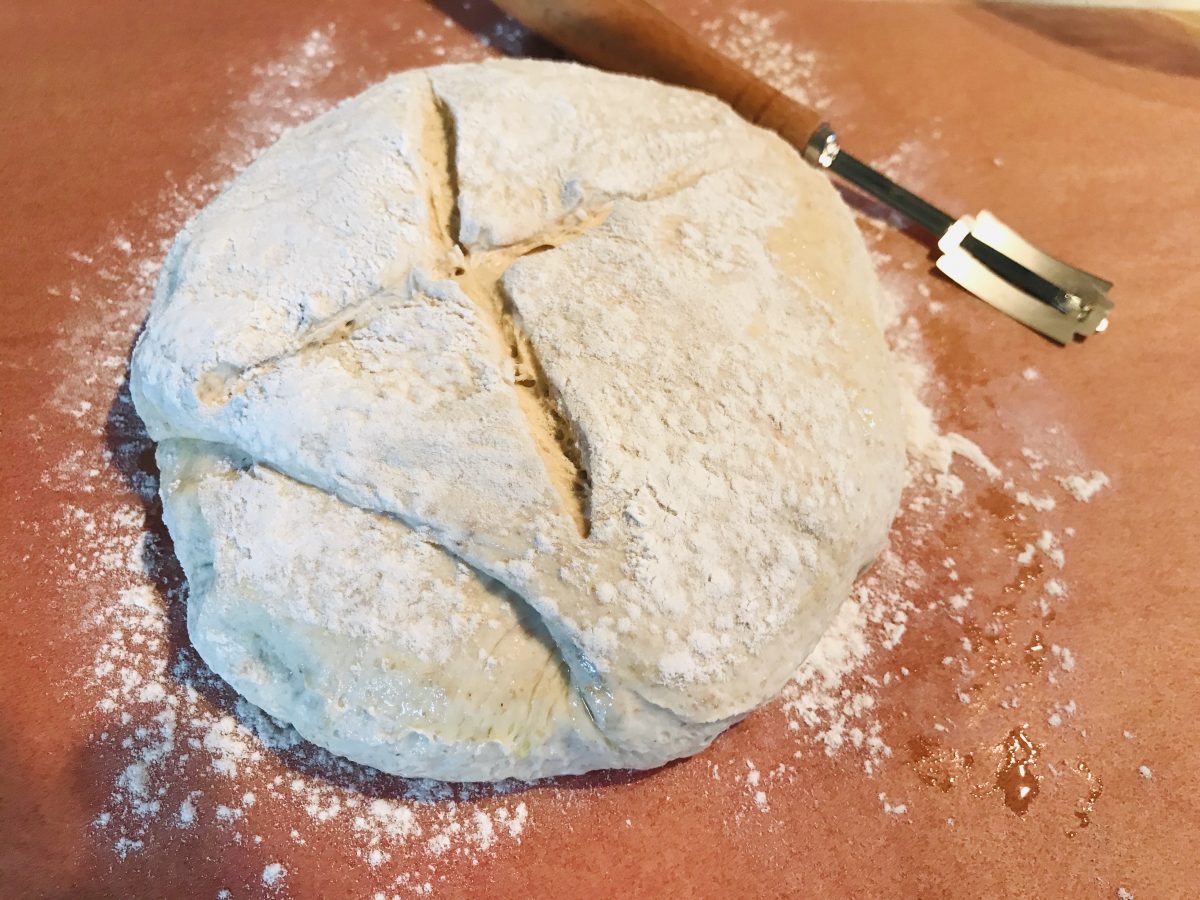
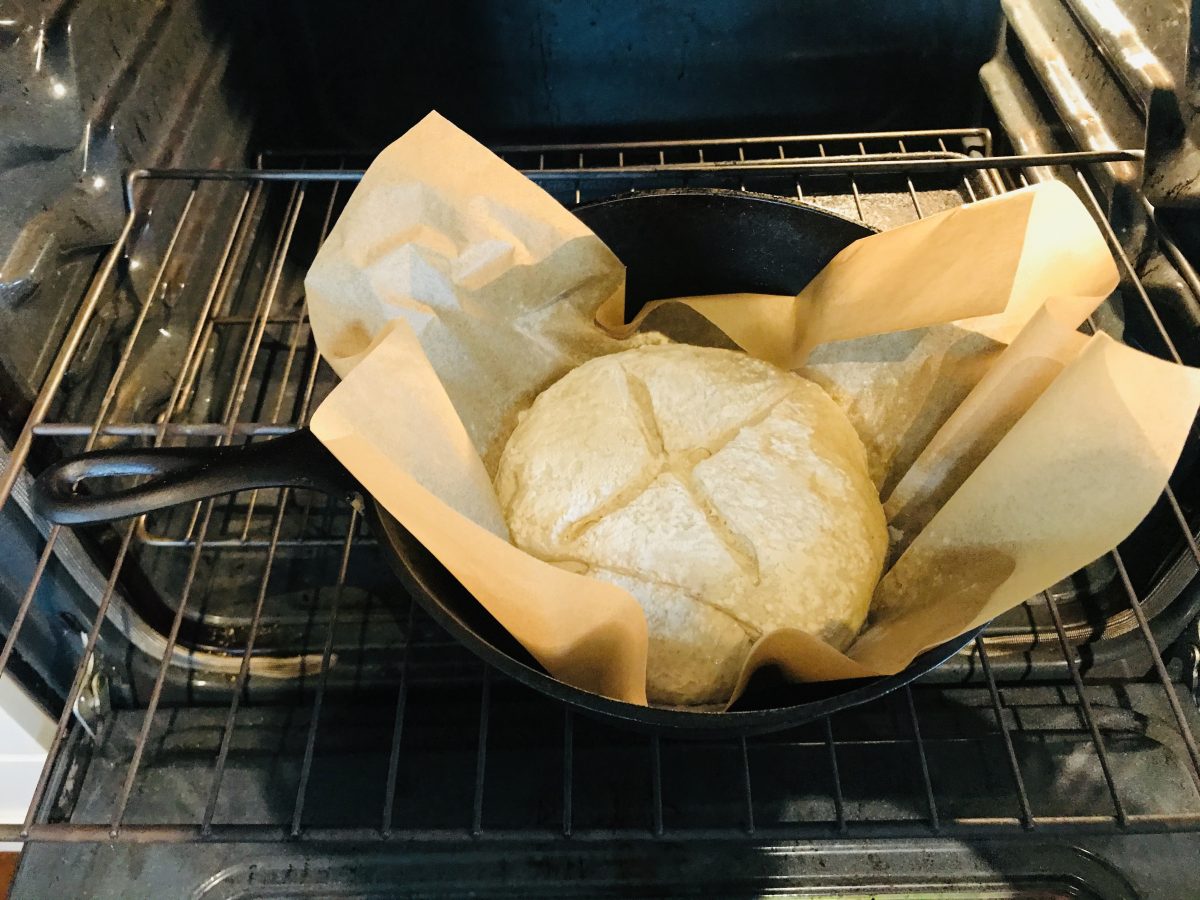
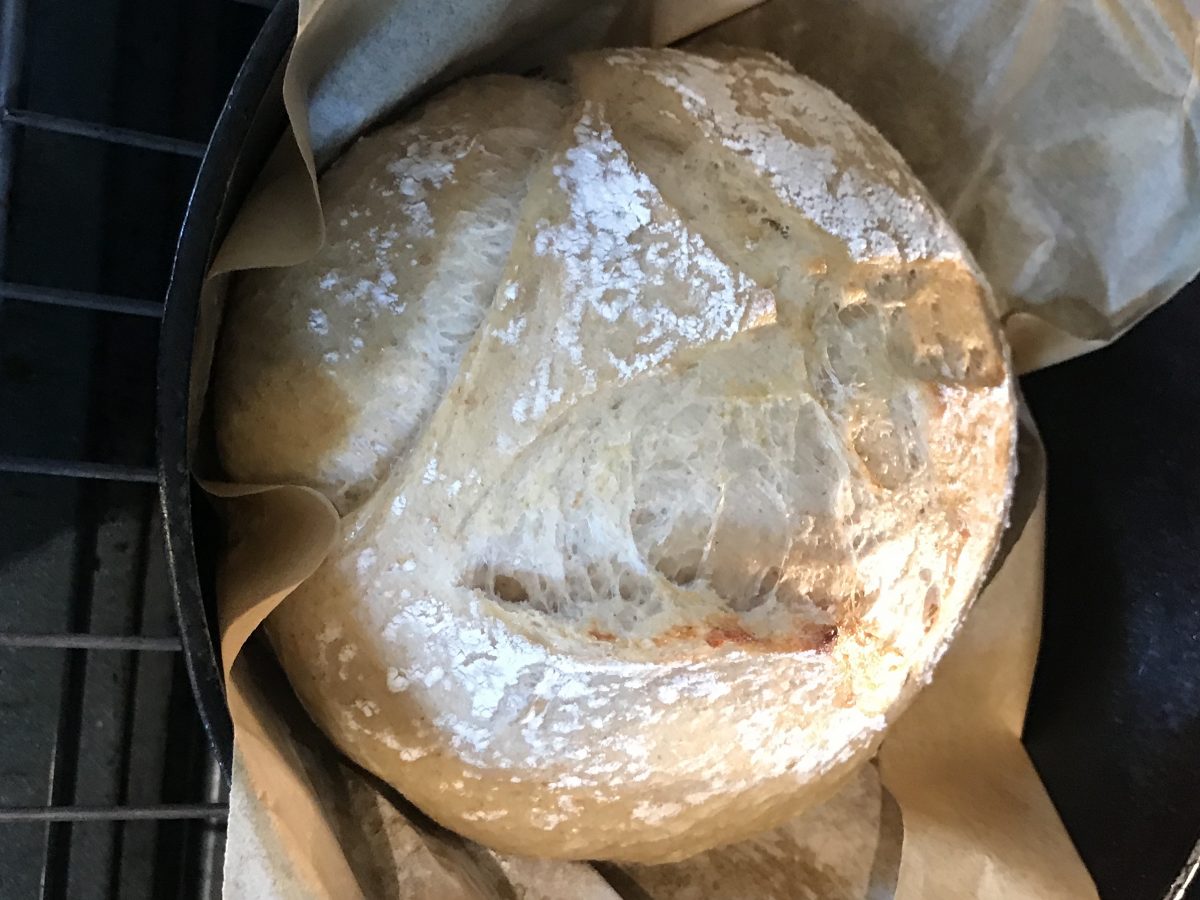
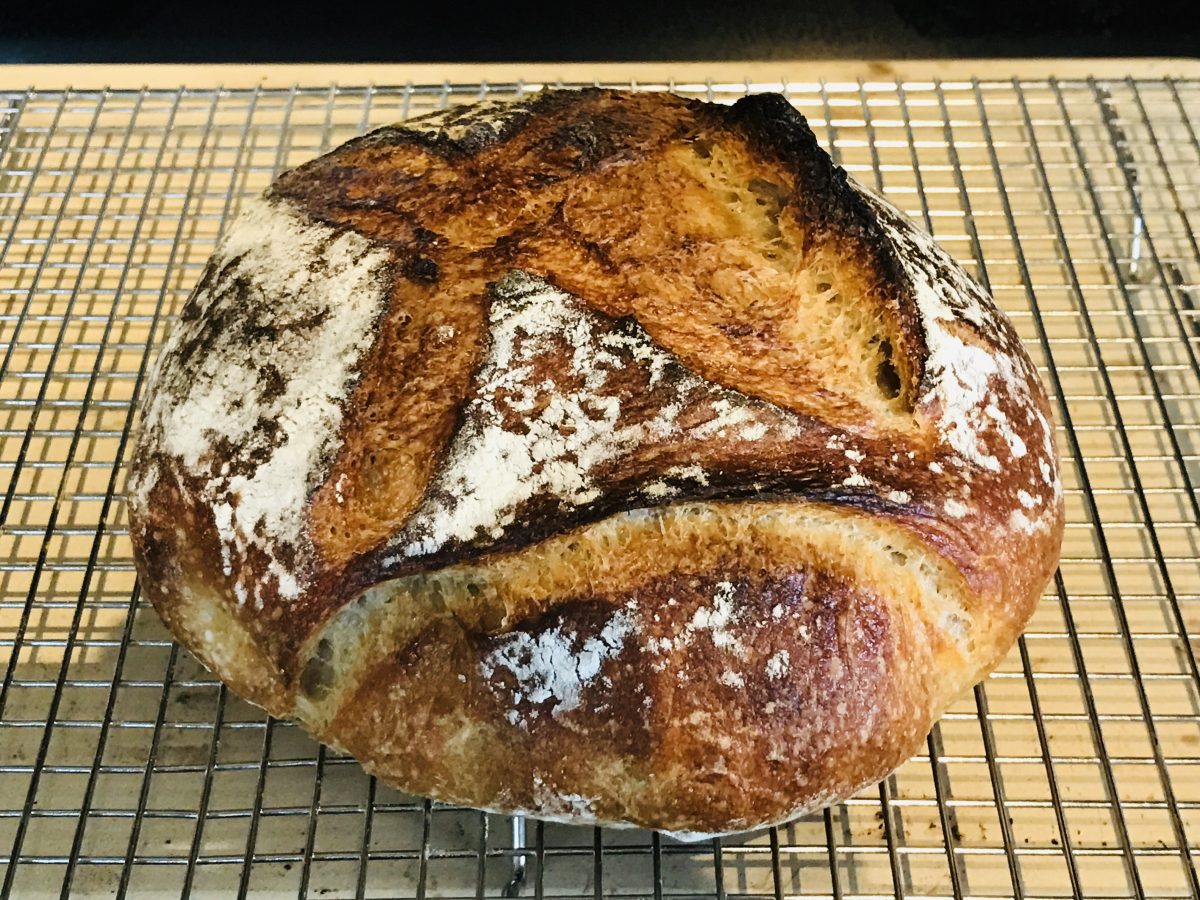
Yum, looks good.